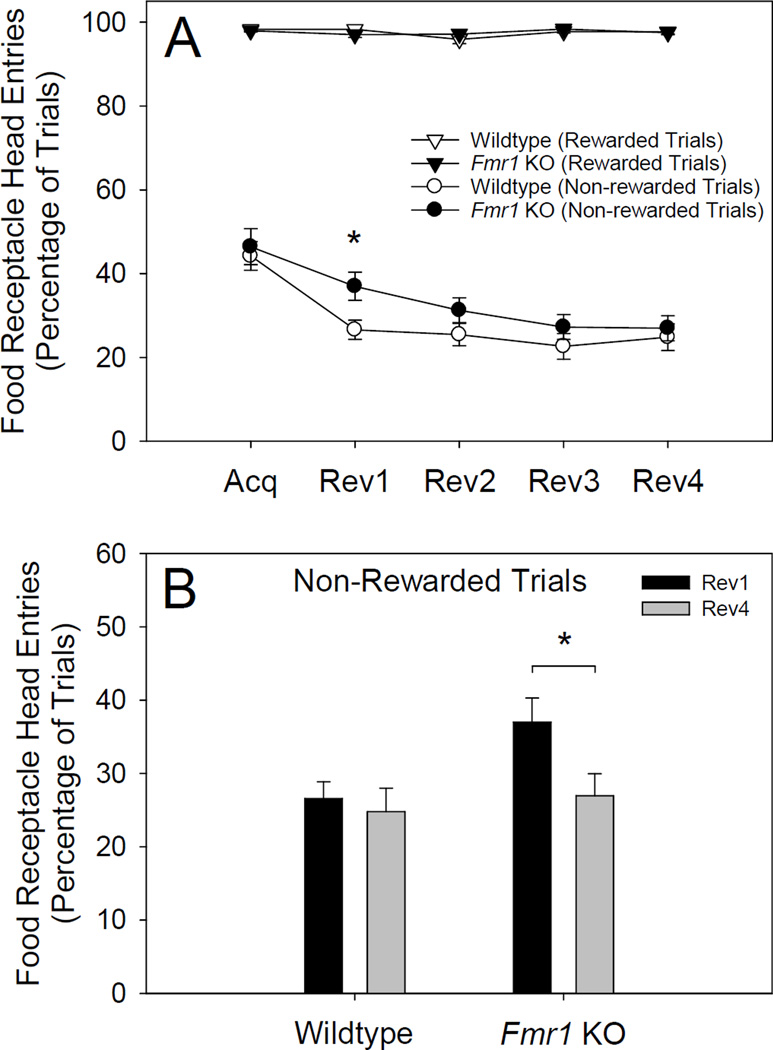Figure 3.
Percentage of trials on which Fmr1 KO (n = 19) and wildtype littermates (n = 20) committed a food receptacle head entry following a nosepoke to the correct (rewarded) or incorrect (non-rewarded) stimulus displayed on the touchscreen. (A) During reversal 1, the percentage of trials during which Fmr1 KOs attempted to collect a reward following a nosepoke to the incorrect, non-rewarded stimulus (i.e., reward collection errors) was significantly greater than that of wildtypes (* = p < .05). (B) Although reward collection errors declined to the same degree across the experiment in both Fmr1 KOs and wildtypes, the decline was significantly protracted in Fmr1 KOs (* = p < .05).

